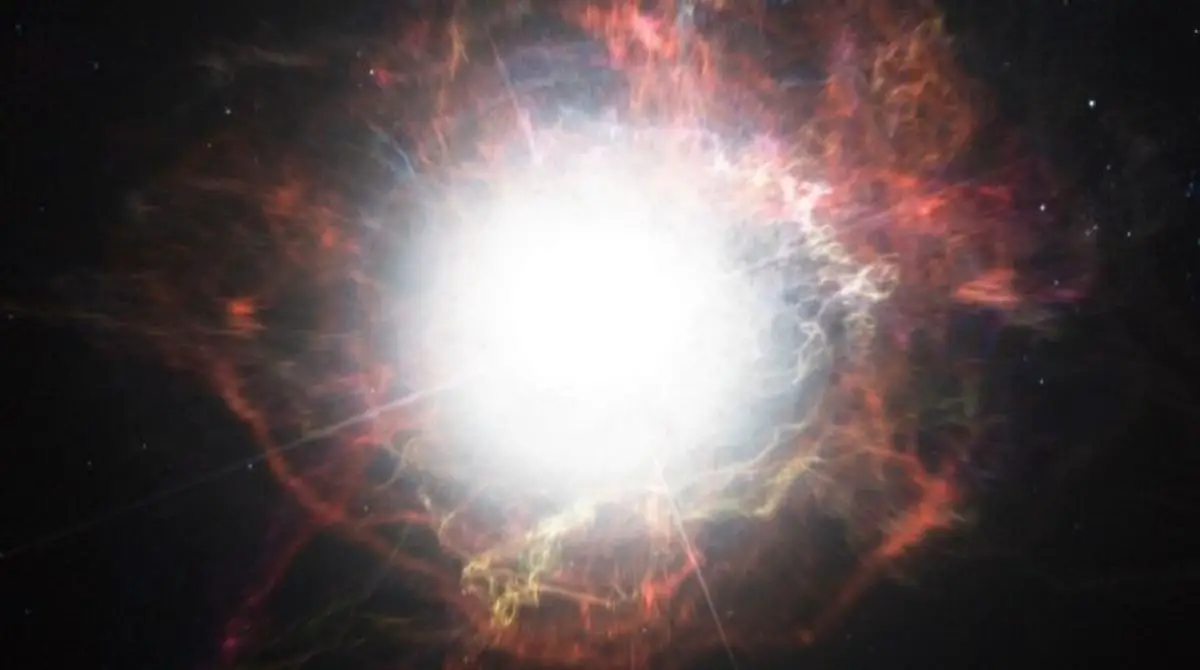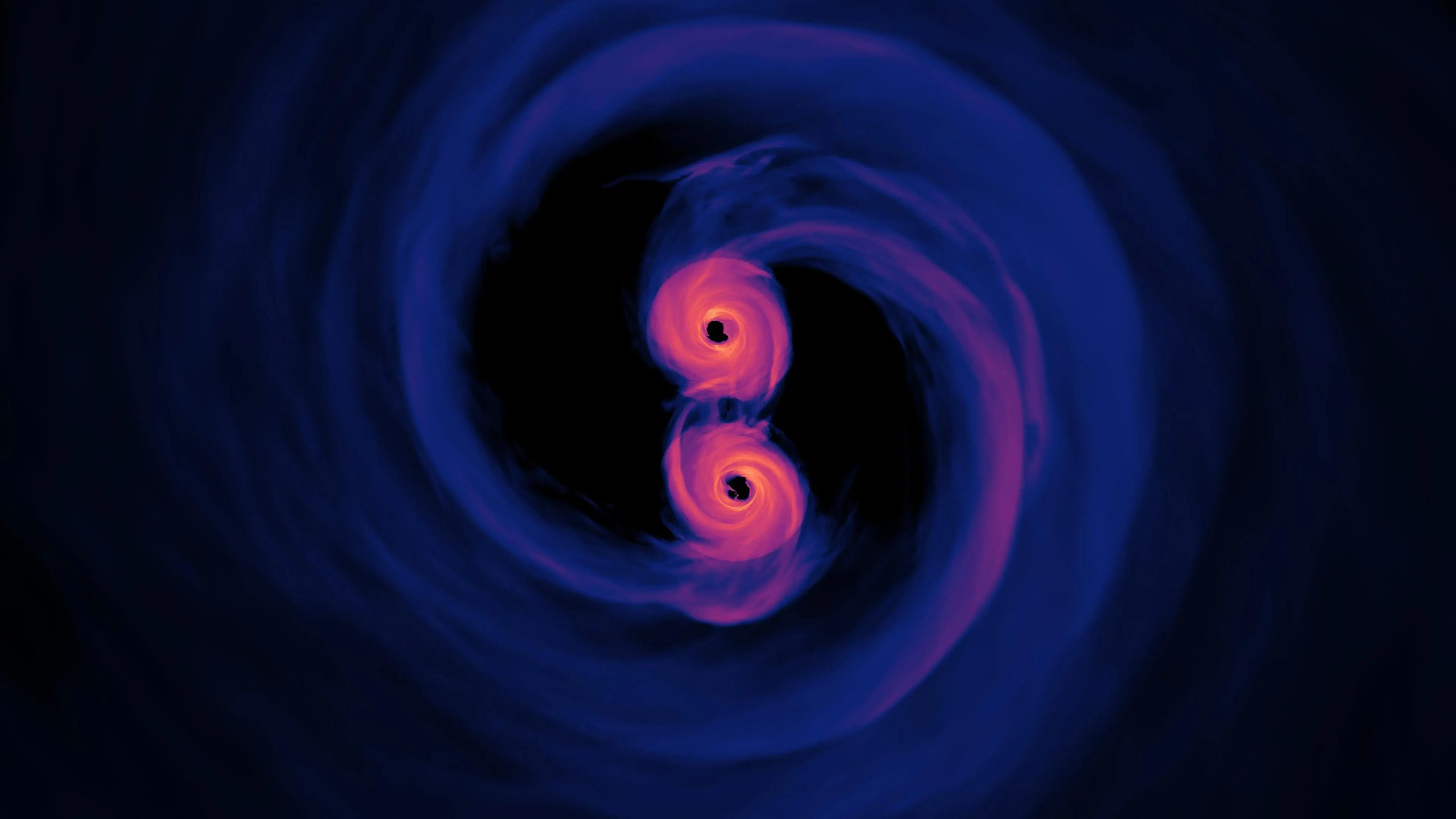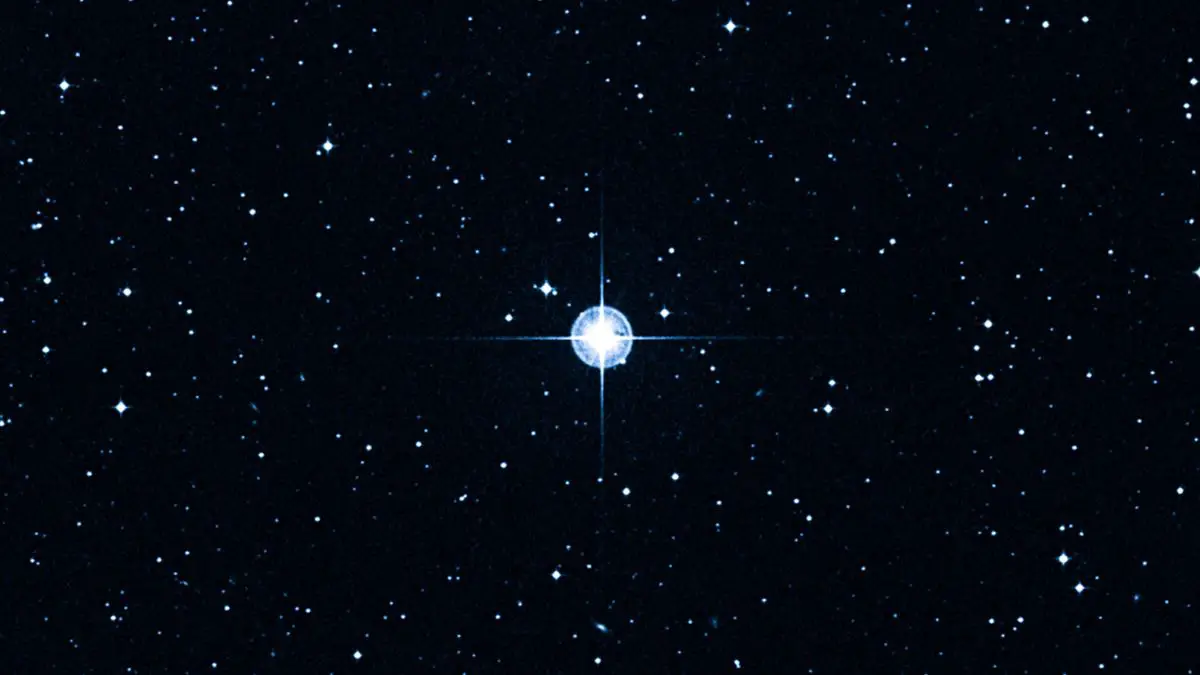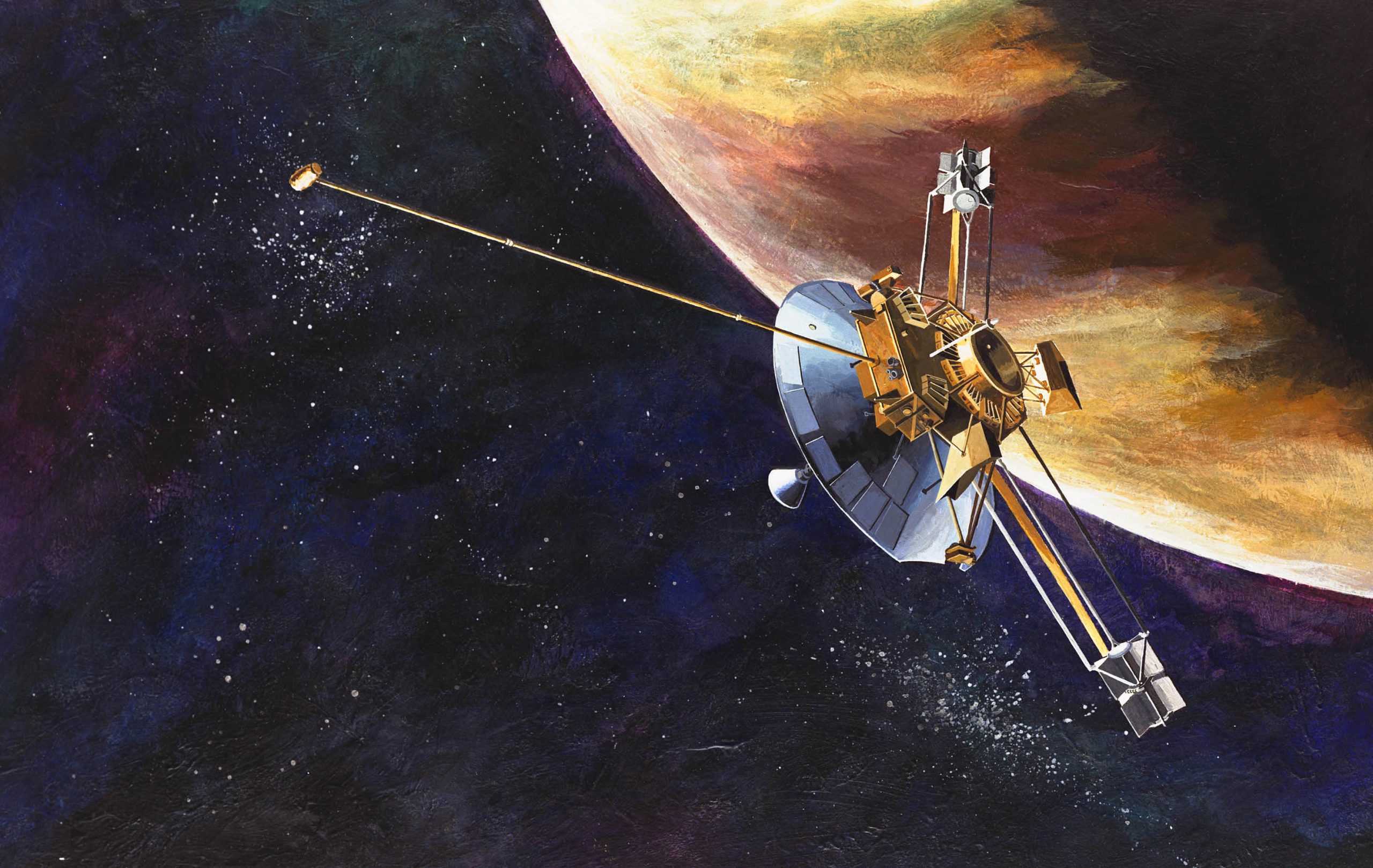A massive star 75 million light-years away has disappeared—without even leaving a supernova.
Key Takeaways:
- A giant star in the Kinman Dwarf galaxy, once shining brightly, has mysteriously vanished.
- Scientists expected to see a supernova, but instead, the star simply faded from view.
- One possible explanation is that the star collapsed directly into a black hole without an explosion.
- Another theory suggests the star’s light was blocked by a massive dust cloud.
- Future Hubble observations may provide clues about what really happened to this massive star.
________
Astronomers have stumbled upon a cosmic mystery—a massive star, estimated to be 100 times the Sun’s mass, has disappeared without any observable explosion. Located in the Kinman Dwarf galaxy, about 75 million light-years away, this star was once so bright that it illuminated its entire host galaxy. However, when researchers recently observed it using the Very Large Telescope (VLT) in Chile, it was nowhere to be found.
A Star That Faded Without a Supernova
The missing star was first observed between 2001 and 2011, when it was still shining. However, when astronomers led by Andrew Allan of Trinity College Dublin examined the Kinman Dwarf in August 2019, they were surprised to find no trace of it. To confirm their findings, the European Southern Observatory allowed them to use another instrument, X-Shooter, in December, which reaffirmed that the star had vanished.
Typically, when massive stars die, they explode in spectacular supernovae, leaving behind either a neutron star or a black hole. However, in this case, no supernova was detected, making the disappearance even more puzzling.
Two Possible Explanations
Scientists have proposed two main theories for the star’s fate. One possibility is that the star experienced a period of extreme outbursts before collapsing, releasing clouds of dust that obscured its light from view. The other, more intriguing possibility is that the star collapsed directly into a black hole without undergoing a supernova, a rare but theoretically possible event known as a “failed supernova.”
This isn’t the first time astronomers have suspected such an event—another massive star in a galaxy 22 million light-years away may have also vanished without a visible explosion. If confirmed, these cases could change our understanding of how the most massive stars die.
To solve the mystery, astronomers plan to analyze past Hubble Space Telescope images from 2011 and compare them to new observations. If the missing star is still there but shrouded in dust, Hubble might detect its faint glow. But if no trace remains, it could be evidence of a direct collapse into a black hole.
Understanding these events could help scientists learn more about stellar evolution, black hole formation, and the broader mechanisms shaping the universe.




